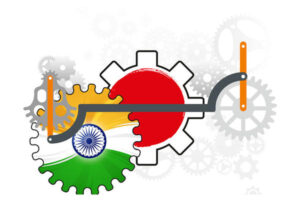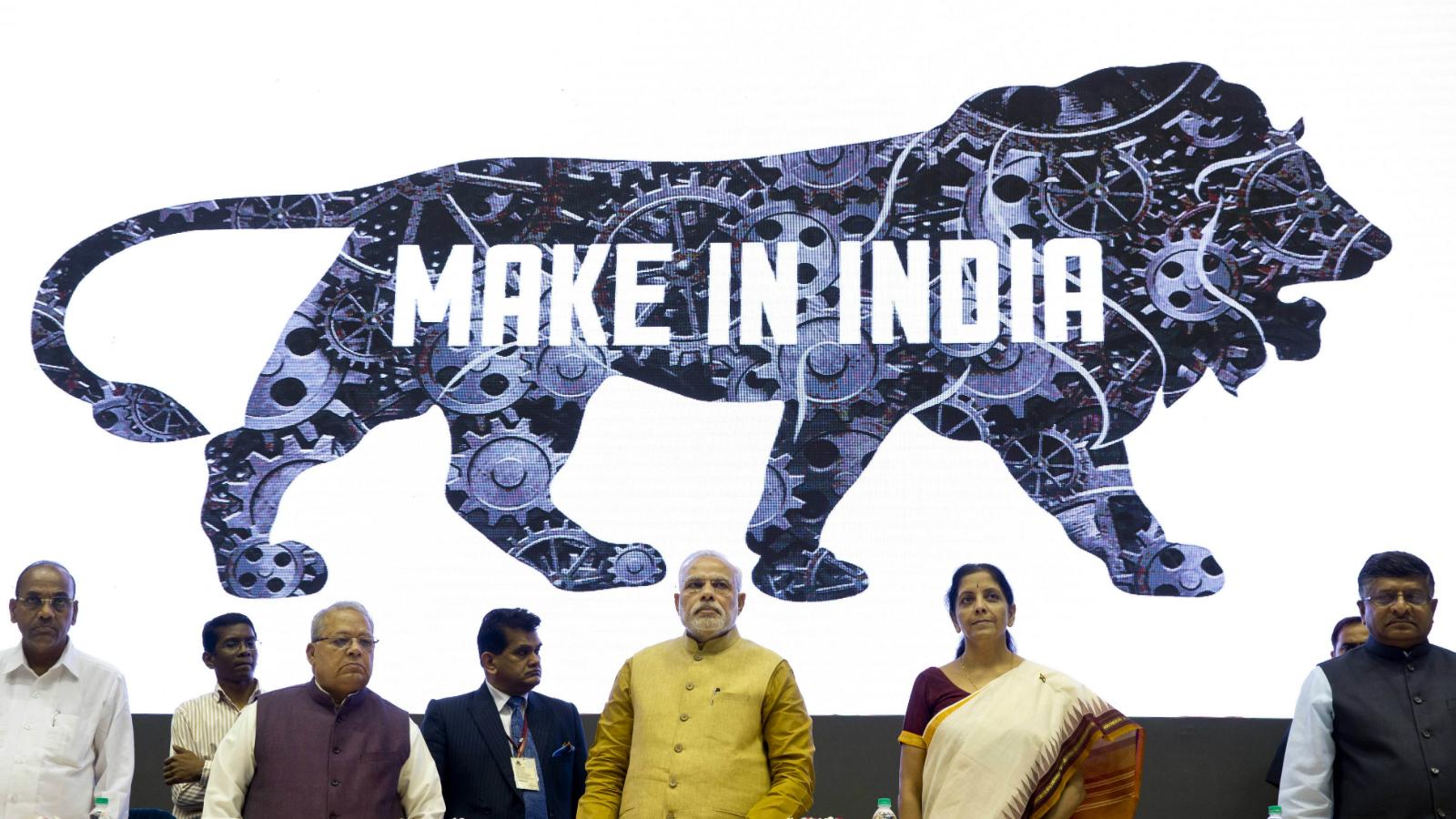Corona virus which spread from China is causing havoc all over the world and its direct impact on the economy along with people’s lives is quite evident. All economies, business are on a standstill. People are locked in their homes, poor struggling to make ends meet, hospital packed with ill patients and overworked medical staff. At present, there is little to no hope as to when situation will normalise, without the lurking fear of getting infected by Covid.

In such situation, all nations are enraged with China. It may soon lose its status of being the “Global manufacturing hub” as many companies are eager to leave china and set up their manufacturing base in India.
Amidst the difficulties arising out of this epidemic, about 1000 foreign companies are in talks with government officials to set up their factories in India. According to anonymous authorities, at least 300 of these companies in mobile, electronics, medical devices, textiles and synthetic fabrics are actively in touch with the government to set up factories in India.
On the other hand, Indian economist Padma Bhushan Shri Arvind Panagariya has speculated that there is a possibility for multinational companies to shift their operations from China in the wake of the Covid-19 epidemic, which India should take up and create long-term jobs in the formal sector. He urged the need of a proper plan and its appropriate implementation.
What is India’s efforts for attracting foreign companies post Covid-19 pandemic?

India is a developing nation with a vision of becoming a Trillion Dollar economy by 2025 but got pushed back by the uncertain Pandemic affecting every nation in the world. Prime Minister Narendra Modi urged Indian citizens to be ‘Self-Reliant’ and released a financial package targeted at labourers, farmers, honest tax-paying middle class, as well as Indian industrialists like the Micro and small scale industries.
Apart from ease of doing business, the government is also preparing heavily for attracting foreign direct investments and lure companies who are saying Ciao to China. The multinational firms, however, would not completely leave China and shift base to other countries, but they are looking at alternatives and India could be one of the preferred destinations.
The government has taken steps like promoting simple doing business and liberalisation of the foreign direct investment norms to draw in overseas investors. India has jumped 14 places to the 63rd position on the World Bank’s ease of doing business ranking released in the year 2019.
Rumour has it that the Indian government is reportedly in the process of identifying and developing 4.6 lakh hectares of land, including 1.1 lakh hectares of existing land in industrial areas, and planning fiscal incentives in the form of relaxed taxations, in order to attract foreign firms. Further, a couple of state governments also are proactively working to capitalise on the chance .
There are reports of many Korean companies pulling out their investments from China due to health pandemic. There are also reports of Japanese companies embarking on the de-risking strategy and wanting to pull out their investments from China.
The Japanese government has earmarked 2.2 billion dollars as an economic stimulus package to help its manufacturers shift production out of China, as the economic impact of COVID-19 disrupts critical supply chains. China’s controlled economy and rising trade war tensions with the United States further makes it difficult for them to hold back these companies from leaving, especially in the current times.
India provides a suitable alternative destination for companies looking for relocation. Proposals for which are already being reviewed at various levels- central government, state industry departments and Indian missions abroad. This should be seen alongside the Indian government’s policies to boost up its manufacturing sector.
20 billion dollars’ worth Investments attracted by Indian Businesses in 3 months during Covid-19.

India has attracted investments and pledges from 15 companies in three months from April to July 2020 during the Covid-19 pandemic.
This is a huge vote of confidence for India by a number of the world’s largest and richest corporations like Google, Facebook, Walmart, Samsung etc.
Prime minister signals that this is just the beginning says, “This is just the start, it shows India is a very favourable investment destination.”
All of this also coincides with Prime Minister Narendra Modi’s clarion call for Aatma-Nirbhar Bharat that is to be self-reliant and have Made in India supply solutions.
It is not a secret or a surprise that most of the $20 billion investment assurances have a common subject, and that is Reliance Industries. After all, Mukesh Ambani’s Jio has raised over Rs 1.5 lakh crore during the pandemic itself from a very promising growth in the telecom industry sector.
Six more global companies are either entering India or expanding existing operations, Namely- South Korea’s Samsung and Hyundai Mobis, Japanese Tsuzuki, Amazon’s partners SGS, Axtria, f5, etc. Their investment amounts have not yet been revealed.
Is India ready for foreign companies despite our negative GDP?
Optimism surrounding India’s growth has mainly centred on the domestic propensity to consume, availability of low-cost and plentiful labour, the sharp decline of global oil prices, and the expectation of foreign capital moving to emerging market economies once global macro-economic indicators stabilise.

Hence the growth of GDP (Gross Domestic Product) plays an important role in shaping the economy in the Global Finance. However, owing to a strict nationwide lockdown due to the novel coronavirus during the bulk of the first quarter of the financial year 2020-21, India’s Gross Domestic Product (GDP) for the April-June (quarter 1) skidded by a sharp 23.9 %, as per provisional estimates released by Ministry of Statistics and Programme Implementation (MoSPI) on 31st August 2020.
There is an estimation that it will surge down more by 18% in the coming quarter.
The International Monetary Fund contradictorily estimated that India’s Gross Domestic Product (GDP) will grow by 1.9% for the fiscal year ending 31 March 2021, making it the only other major economy alongside China estimated to grow and has revised GDP growth for the next fiscal year at 7.4 %.
India’s growth is also likely to be supported by the flight of capital from China, says IMF.
Despite promising indicators, India’s ability to attract foreign direct investment (FDI) should not be taken for granted — particularly by the policy makers at different relevant ministries.
For India to deliver on its promise of the offering of 461,589 hectares of land to foreign companies, reform on land laws is vital. Any country can provide foreign investors with capital money and technology support.
However, the rigidity of land laws has, so far, prevented the propagation of commercial activity in the manufacturing sector, and reduced the foreign investors interest in India.
The Indian government’s fascination with the “Ease of Doing Business” rankings has not served it well. While landmark policy reforms between 2014-19 have manifested in a 79-position jump in India’s rankings to 63rd place, these are not fully representative of several on-ground challenges faced by businesses.
In reports, Vietnam, was ranked 70th and yet attracted more foreign investment. On the contrary, Vietnam’s performance was the lowest in ‘Resolving insolvency’, a field India has extensively taken care of via the Bankruptcy Code.
India’s strong commitment to democracy and the freedom of information makes it a strong competitor to attract foreign capital in a post-Covid-19 world, and participate more purposefully in the global supply chain. However, the government will have to tackle key issues such as reforms in land laws before these promises can be realised and we can be prepared for welcoming the companies leaving China.
What can India do to not only attract foreign investments but also replace China’s dominance on manufacturing?
Simply opening of the sectors or the economy, and alluring foreign investors, won’t be enough. We need to make a conducive and favourable business environment that permits foreign firms to manufacture at a competitive cost and use abundant resources like manpower.
We need market reforms like rationalising punitive land acquisition clauses and multiple labour laws, both at Centre and state level. It is time to hurry up work on the four labour codes on industrial relations at a central level. The government should augment the work on infrastructure, logistics and trade facilitation in order that trade and transaction costs, crucial for FDI firms, are reduced.
Providing land with power, water and road access may help attract new investments to an economy that was slowing even before the virus hit, and is now watching a rare contraction as a nationwide lockdown hit consumption.
In order to make the global firms feel accustomed and welcomed, we have to present a credible alternative to China as a manufacturing hub, the Indian government will have to overhaul the state power utilities, put in situ a mechanism for enforcing commercial contracts by bringing in specialised commercial courts and establish a consultative mechanism for commercial/foreign exchange related laws.
All in all, we have to improve contract enforcement and upgrade our domestic infrastructure as well.
Can India really become the Global Manufacturing Hub of the world?

When a new Samsung factory was set up in India in the year 2018, For India, this was like the start of the Industrial Revolution 4.0. Indian economy growth has been very irregular for a few years now. While China focused on cheap, high volume commodity production, India has seen high growth within the services sector. The new government has begun its term hitting the proper notes with the Prime Minister personally putting his weight behind the “Make in India” campaign.
Right from creating one window facility for addressing investor concerns, identifying key manufacturing sectors, to making a standard platform to unite state governments, bureaucracy and company leaders; the govt seems confident in motive of propogating India’s “ease of doing business” policy on an international scale. Easing the FDI norms in construction, rail infrastructure and defence should only be the start of a series of positive signals.
India is blessed an outsized labour pool and admirable levels of judicial transparency. It can leverage its territorial position to play a critical role within the global supply chains. Doubling up as a possible high consumption market can keep demand fluctuations in restraint also as save on the logistics costs. And if it can internally strengthen on three fronts: cost (cheaper labour), quality (high skilled workforce), and provide chain (robust infrastructure), India can call itself subsequent global factory in future.
Although the COVID-19 would definitely cause delays in starting of the new process , nevertheless, India can fill the vacuum created within the manufacturing sector. For this, India must smoothen its policy process to form sure that the trajectory doesn’t get shifted towards Bangladesh, Malaysia, Vietnam or Thailand.
The window of opportunity is narrowing because the countries are pacing ahead in taking advantage of things and India must act fast if it’s to regain competitiveness and market share within the manufacturing sector. India has the specified labour pool, however, it must push the business acumen in favour of market requirement for long-term sustenance.
India, the world’s fifth-largest economy with an abundant labour force, offers the simplest alternative in terms of the depth and size of the markets. With the median age of 27 and around 900 million “working-age” population, India may be a young and aspirational economy. within the past, China used its huge labour force in manufacturing by attracting FDI – it’s time for India to try to to an equivalent , particularly when foreign firms are trying to find an alternate manufacturing base.


